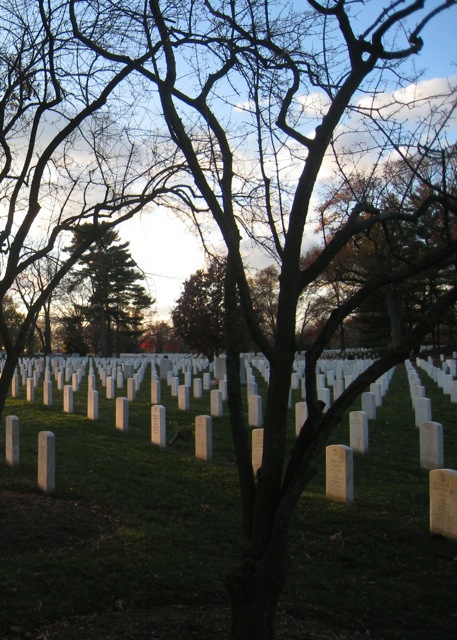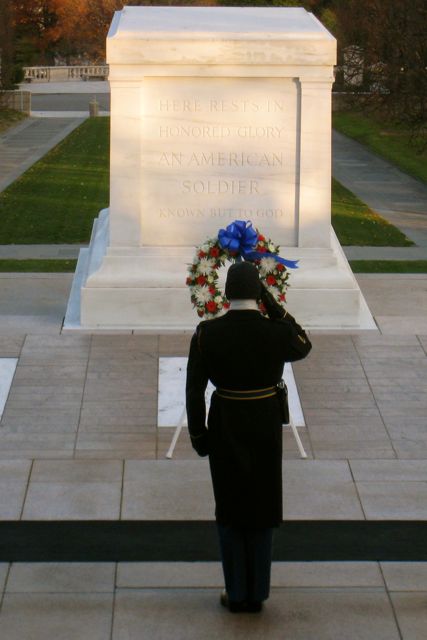Updated: May 29, 2016
Here are nine things to know about the Memorial Day holiday.
To those of you who have served in our country's Armed Forces, we thank you and your families for your service.

1. Memorial Day was established after the Civil War.
Three years after the end of the Civil War (May 5, 1868), an organization of Union veterans established Decoration Day as a time for the nation to decorate the graves of the war dead with flowers. May 30 was chosen because flowers would be in bloom all over the country.
2. Memorial Day was first observed at Arlington National Cemetery.
However, several local springtime tributes to the Civil War dead already had been held in various places. One of the first occurred in Columbus, Miss., April 25, 1866, when a group of women visited a cemetery to decorate the graves of Confederate soldiers who had fallen in battle at Shiloh. The nearby graves of Union soldiers lay bare — and the women placed some of their flowers on those graves as well.
3. After World War I, Memorial day was expanded to honor all Americans who died in war.
In 1971, Memorial Day was declared a national holiday by an act of Congress and placed on the last Monday in May.
4. A National Moment of Remembrance at 3pm on Memorial Day honors those who have died in service with a minute-long moment of silence.
In December 2000, Congress passed and President Clinton signed into law “The National Moment of Remembrance Act,” PL 106-579.
5. The flag should be flown at half-staff from sunrise until noon only.
On Memorial Day, the flag should be flown at half-staff from sunrise until noon only, then raised briskly to the top of the staff until sunset, in honor of the nation’s battle heroes. No regulations existed for flying the flag at half-staff and, as a result, there were many conflicting policies — until March 1, 1954, when President Dwight Eisenhower issued a proclamation on the proper times. (Learn more on flag etiquette.)
6. Bright red poppies were first sold in 1920 to help orphans and others struggling after the war.
The Veterans of Foreign Wars adopted the poppy as its official memorial flower in 1922. And in 1924, a poppy factory was built in Pittsburgh, Pa., providing a reliable source of poppies and a practical means of assistance to veterans. (Learn about the VFW's Buddy Poppy Program.)
7. The Old Guard honors the fallen with a tradition known as "flags in."
The Old Guard (3rd US Infantry designated as the Army's official ceremonial unit) places flags before the gravestones of service members buried at both Arlington National Cemetery and the US Soldier's and Airmen's Home National Cemetery just prior to Memorial Day weekend. Small American flags are placed one foot in from and centered before each grave marker: the toe of the combat boot placed against the center of a headstone, flag planted at the heel. In three hours, The Old Guard places flags in front of more than 260,000 gravestones and about 7,300 niches at the cemetery's columbarium, and they remain in the cemetery throughout the weekend, ensuring that a flag remains at each gravestone.
8. More than one million Americans died in our nation’s conflicts going back to the Revolutionary War:

- American Revolution (1775-1783): 4,435
- War of 1812 (1812-1815): 2,260
- Mexican War (1846-1848): 13,283
- Civil War (1861-1865): 364,511 (Union and Confederate)
- Spanish-American War (1898-1902): 2,446
- World War I (1917-1918): 116,516
- World War II (1941-1945): 405,399
- Korean War (1950-1953): 36,574
- Vietnam War (1964-1975): 58,209
- Gulf War (1990-1991): 382
- Afghanistan War (2001-present): 2,326 (as of October 1, 2015)
- Iraq War (2003–2014): 4,491
9. Out of the 83,126 missing, approximately 75% of the losses are located in the Asia-Pacific, and over 41,000 of the missing are presumed lost at sea (i.e. ship losses, known aircraft water losses, etc.)
A 2013 GAO Report explains:
Missing persons from World War II comprise more than 73,000, or about 88 percent, of the total. Of the missing from all conflicts, about 44,000 are believed to have gone missing on land, and about 39,000 over water. Missing persons are believed to be located within the areas of responsibility of every geographical combatant command. For example, more than 1,400 persons were reported missing somewhere within the Northern Command area of responsibility, in areas that include the United States and Canada.
(Sources: Dept. of Veterans Affairs; VA Fact Sheet on Displaying the Flag at Half-staff; The Flower of Remembrance; PBS National Memorial Day Concert; Arlington National Cemetery; ; CRS Report on American War and Military Operations Casualties; DOD Casualty Report; Stars and Stripes)

